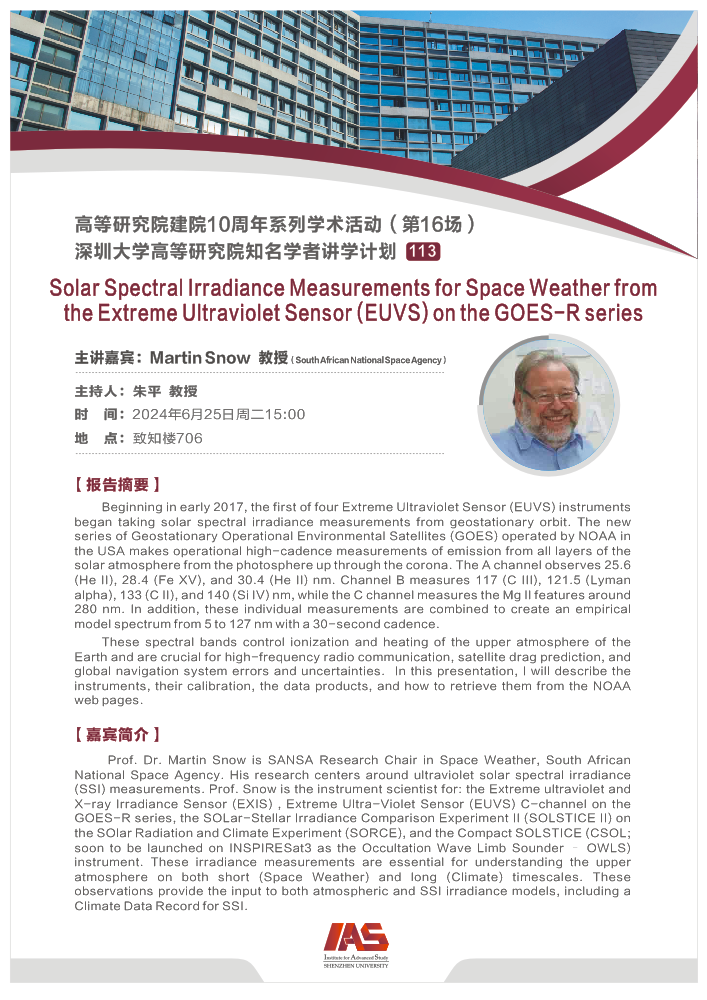报告主题:Solar Spectral Irradiance Measurements for Space Weather from the Extreme Ultraviolet Sensor (EUVS) on the GOES-R series
主讲人:Martin Snow教授(South African National Space Agency)
主持人:朱平教授
时 间:2024年6月25日周二15:00
地 点:致知楼706
嘉宾简介:
Prof. Dr. Martin Snow is SANSA Research Chair in Space Weather, South African National Space Agency. His research centers around ultraviolet solar spectral irradiance (SSI) measurements. Prof. Snow is the instrument scientist for: the Extreme ultraviolet and X-ray Irradiance Sensor (EXIS) , Extreme Ultra-Violet Sensor (EUVS) C-channel on the GOES-R series, the SOLar-Stellar Irradiance Comparison Experiment II (SOLSTICE II) on the SOlar Radiation and Climate Experiment (SORCE), and the Compact SOLSTICE (CSOL; soon to be launched on INSPIRESat3 as the Occultation Wave Limb Sounder – OWLS) instrument. These irradiance measurements are essential for understanding the upper atmosphere on both short (Space Weather) and long (Climate) timescales. These observations provide the input to both atmospheric and SSI irradiance models, including a Climate Data Record for SSI.
报告摘要:
Beginning in early 2017, the first of four Extreme Ultraviolet Sensor (EUVS) instruments began taking solar spectral irradiance measurements from geostationary orbit. The new series of Geostationary Operational Environmental Satellites (GOES) operated by NOAA in the USA makes operational high-cadence measurements of emission from all layers of the solar atmosphere from the photosphere up through the corona. The A channel observes 25.6 (He II), 28.4 (Fe XV), and 30.4 (He II) nm. Channel B measures 117 (C III), 121.5 (Lyman alpha), 133 (C II), and 140 (Si IV) nm, while the C channel measures the Mg II features around 280 nm. In addition, these individual measurements are combined to create an empirical model spectrum from 5 to 127 nm with a 30-second cadence.
These spectral bands control ionization and heating of the upper atmosphere of the Earth and are crucial for high-frequency radio communication, satellite drag prediction, and global navigation system errors and uncertainties. In this presentation, I will describe the instruments, their calibration, the data products, and how to retrieve them from the NOAA web pages.



